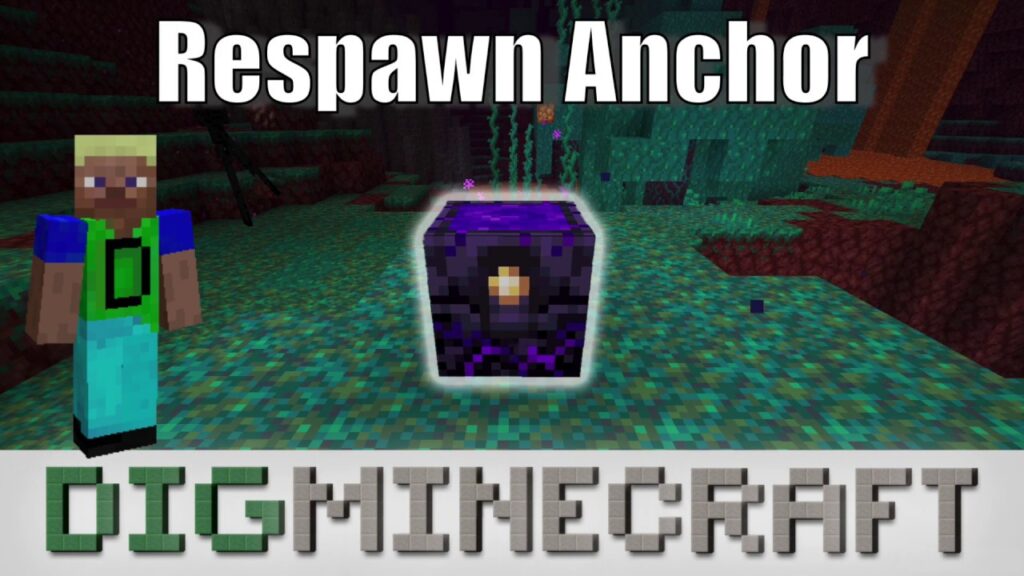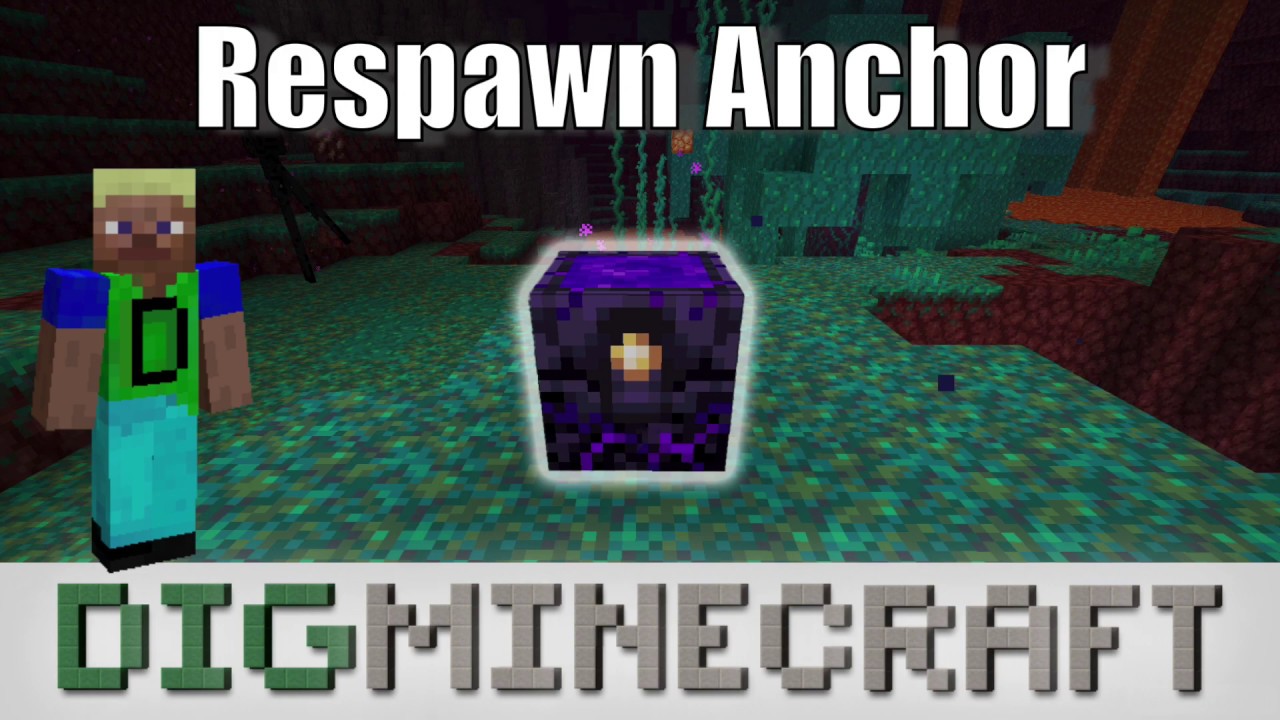
How Does a Respawn Anchor Work? A Comprehensive Guide
The Respawn Anchor is a game-changing block introduced in the Nether Update of Minecraft. It allows players to set a temporary respawn point in the Nether, offering a significant advantage for exploring this dangerous dimension. But how does a Respawn Anchor work, exactly? This comprehensive guide will delve into the mechanics, crafting, usage, and limitations of the Respawn Anchor, providing you with all the information you need to effectively utilize this valuable tool.
Understanding the Basics of the Respawn Anchor
Before we dive into the specifics, let’s establish a clear understanding of what the Respawn Anchor is and why it’s important. The Respawn Anchor is a block crafted using Glowstone and Crying Obsidian. Its primary function is to allow players to respawn in the Nether, bypassing the need to return to the Overworld after death. This is particularly useful when exploring dangerous areas like Bastion Remnants or Nether Fortresses, where frequent deaths are common.
Crafting the Respawn Anchor
To craft a Respawn Anchor, you’ll need the following materials:
- 6 Crying Obsidian
- 3 Glowstone
Crying Obsidian can be found in Ruined Portals and by bartering with Piglins. Glowstone is readily available in the Nether, typically found hanging from ceilings in caves and other open areas.
Once you have these materials, place them in a crafting table in the following pattern:
- Top row: Crying Obsidian, Crying Obsidian, Crying Obsidian
- Middle row: Crying Obsidian, Glowstone, Crying Obsidian
- Bottom row: Crying Obsidian, Crying Obsidian, Crying Obsidian
This will yield one Respawn Anchor.
Charging the Respawn Anchor
The Respawn Anchor, by itself, is useless. To make it functional, you must charge it using Glowstone. Each Glowstone placed into the Respawn Anchor adds one charge, up to a maximum of four charges. To charge the Anchor, simply interact with it while holding Glowstone. Each interaction will consume one Glowstone and add one charge to the Anchor. The Anchor’s appearance will change to reflect its current charge level. You’ll see the block illuminate more brightly as it gets filled with more Glowstone.
How to Use a Respawn Anchor
Now that you have a crafted and charged Respawn Anchor, let’s explore how to use it effectively. The process is relatively straightforward, but understanding the nuances is crucial to avoid unexpected consequences.
Setting the Respawn Point
To set your respawn point, simply interact with the charged Respawn Anchor. This will set the Anchor as your respawn location. Note that you can only set your respawn point in the Nether. Attempting to use a Respawn Anchor in the Overworld or the End will result in an explosion.
Respawning in the Nether
When you die in the Nether, you will respawn near the Respawn Anchor, provided it has at least one charge. Each respawn consumes one charge. If the Anchor runs out of charges, you will respawn at your default respawn point (your bed in the Overworld). It’s crucial to keep the Anchor charged to avoid unexpected trips back to the Overworld.
Safety Considerations
Using a Respawn Anchor comes with certain risks. As mentioned earlier, attempting to use it in the Overworld or the End will cause an explosion. This explosion is significant and can damage nearby blocks and potentially harm or kill the player. Therefore, it’s vital to ensure you are always in the Nether when interacting with the Anchor.
Furthermore, it’s advisable to place the Respawn Anchor in a safe, enclosed location. This will prevent mobs from interfering with it and potentially causing you to respawn in a dangerous area. A small, well-lit room is ideal.
Advanced Tips and Tricks for Using the Respawn Anchor
Beyond the basic usage, there are several advanced tips and tricks that can enhance your experience with the Respawn Anchor.
Automating Glowstone Collection
Since the Respawn Anchor requires Glowstone to function, automating the collection of Glowstone can be extremely beneficial. This can be achieved using various farm designs, such as a simple Glowstone farm using observers and pistons to break Glowstone blocks. [See also: Minecraft Farm Designs]
Strategic Placement of Respawn Anchors
Consider placing multiple Respawn Anchors in different locations within the Nether. This can provide you with strategic respawn points, allowing you to quickly return to different areas of interest without having to travel long distances after each death. For example, one Anchor could be placed near a Nether Fortress, while another could be placed near a Bastion Remnant.
Using the Respawn Anchor in Hardcore Mode
In Hardcore mode, the Respawn Anchor becomes even more valuable. Since death is permanent in Hardcore, having a reliable respawn point in the Nether can be a lifesaver. However, the risk of explosion is also amplified, so extra caution is required.
Combining with Other Nether Strategies
The Respawn Anchor works well in conjunction with other Nether survival strategies. For instance, establishing a secure base in the Nether with ample resources, combined with strategically placed Respawn Anchors, can significantly improve your chances of survival and success. [See also: Nether Base Building Guide]
Troubleshooting Common Issues with the Respawn Anchor
While the Respawn Anchor is generally reliable, you may encounter certain issues. Here are some common problems and their solutions:
Anchor Not Charging
If the Anchor is not charging when you interact with it while holding Glowstone, ensure that you are actually holding Glowstone and that the Anchor is not already fully charged (four charges). Also, double-check that you are in the Nether. If you are in the Overworld or the End, the Anchor will not charge and will eventually explode if activated.
Respawning at Default Spawn
If you are respawning at your default spawn point instead of near the Respawn Anchor, it likely means that the Anchor has run out of charges. Always keep an eye on the Anchor’s charge level and replenish it as needed. Also, make sure the anchor isn’t obstructed or broken.
Unexpected Explosions
Unexpected explosions are almost always caused by attempting to use the Respawn Anchor outside of the Nether. Ensure you are in the Nether before interacting with the Anchor. If you are certain you are in the Nether and the Anchor is still exploding, it could be a bug, in which case you should report it to Mojang.
The Future of the Respawn Anchor
As Minecraft continues to evolve, the Respawn Anchor may also see changes and improvements in future updates. Mojang is known for listening to community feedback and implementing features that enhance the gameplay experience. It’s possible that we could see new functionalities added to the Respawn Anchor, or perhaps even new blocks that interact with it in interesting ways. Keeping an eye on official Minecraft news and community discussions will help you stay informed about any potential changes.
Conclusion
The Respawn Anchor is an invaluable tool for exploring and surviving in the Nether. Understanding how does a Respawn Anchor work, its mechanics, and limitations is essential for maximizing its benefits and avoiding potential pitfalls. By following the guidelines and tips outlined in this guide, you can confidently utilize the Respawn Anchor to enhance your Minecraft adventures. So, grab your Crying Obsidian and Glowstone, craft a Respawn Anchor, and venture into the Nether with newfound confidence!

